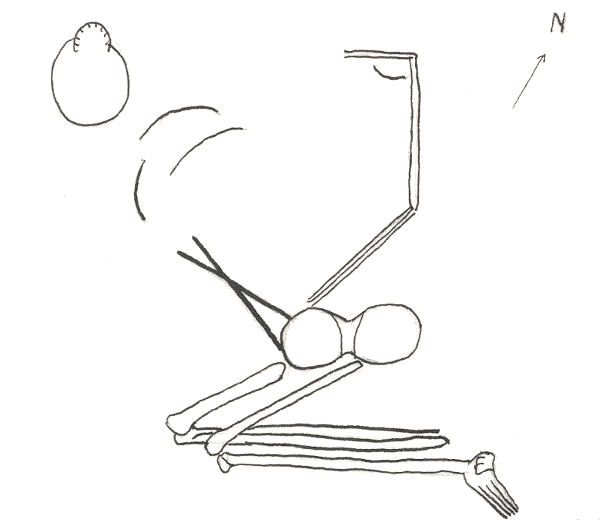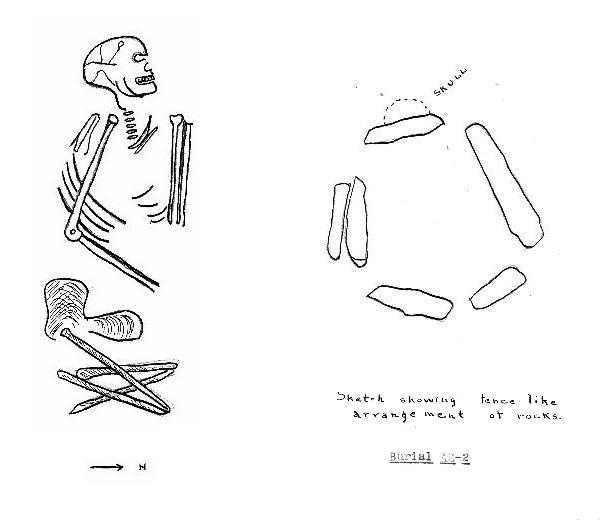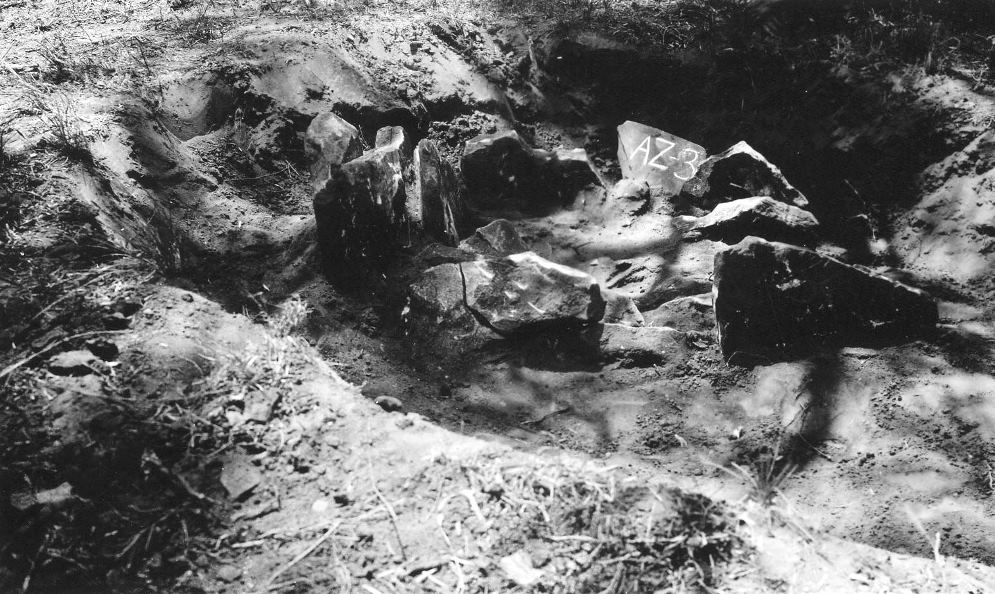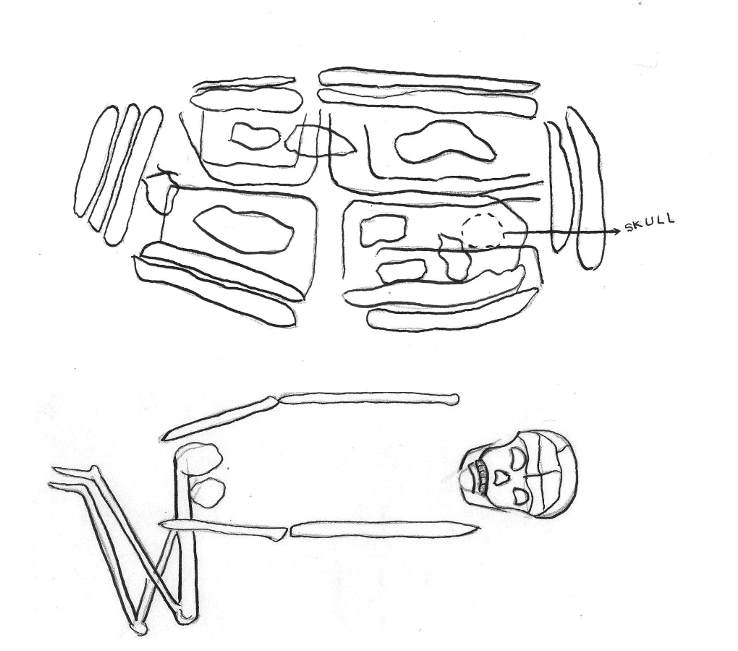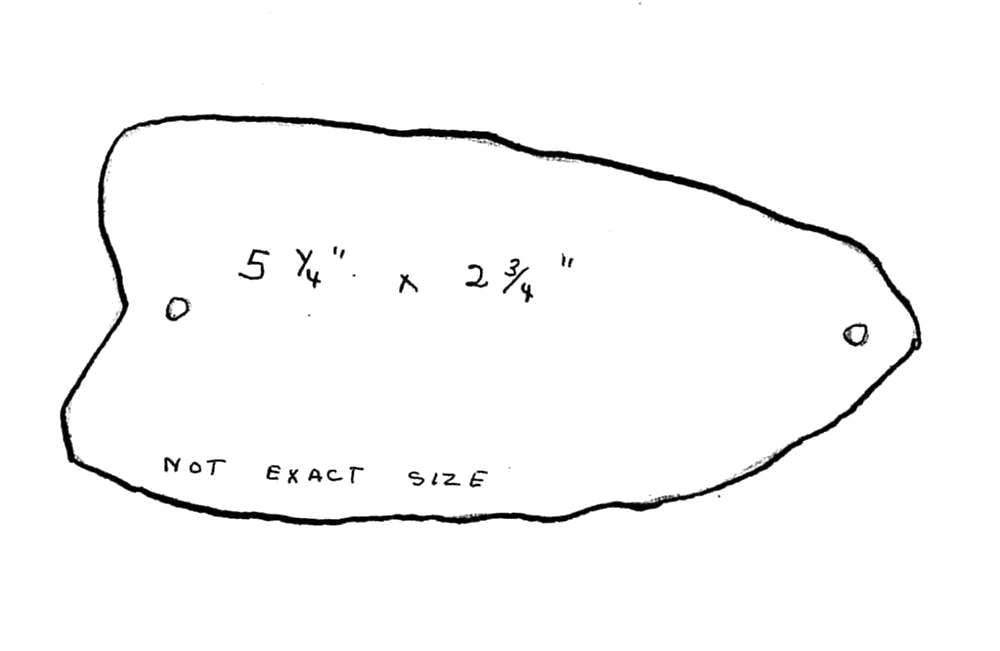Site 41SF1 |
Unidentified lad waits for excavations to begin in area of Burial AZ-2 at Site 41SF1. Note size and arrangement of stones on surface. TARL Archives |
When local landowners in Shackleford County discovered a low pile of rocks extending over an area roughly 40 feet in diameter, they were concerned it might contain a burial. The University of Texas Department of Anthropology was notified and investigations were carried out in 1936. A.M. Woolsey of U.T. and a crew hired by R. E. Forrester conducted excavations in this group of four rock cairns, recovering the primary burials of four adults. A datum stake was placed in the approximate center of the cairns, and distances measure in outward from the stake. The interred individuals had been arranged in varying positions in graves averaging 50 inches in length, 34 inches in width, and 24 inches in depth. All had been laid in flexed position, with legs drawn up tightly. Three individuals lay on left side and one on right. None had the same orientation, although heads were generally to the west. Several unusual aspects were noted among the cairns. One (AZ-3) featured a rather complex stone enclosure with a low-lying slanted “roof” of flat rocks over the skeleton. A stone pendant recovered from burial AZ-4 is particularly notable, as grave inclusions in cairn burials are rare. Analysis of the human remains at TARL by Barbara Jackson indicated two were adult females, one an adult male, and one an adult of indeterminate sex. Notably, the lower jaw was missing from one of the individuals. Documented in other burials of the region, this pattern may be attributed to the taking of “war trophies.” General descriptions of the four burials are given below. Additional details are included in Woolsey’s report from TARL Records, which can be downloaded here as a pdf file. Burial AZ-1Covered by the most extensive layer of rock among the four cairns, this grave contained the partial remains of an adult male. He appeared to have been laid on his right side, with legs flexed such that the heels were under the buttocks. The pelvic bones were “flat on the grave.” Woolsey noted that the skull was in a fair state of preservation, although it was “loose from the body and placed with its top down.” The lower jaw was missing, along with left hand and upper right arm. A portion of the skull was found some 18 inches away. Burial AZ-2Situated the farthest from the center stake (46.5 feet) and deepest below surface (33 inches), Burial AZ-2 was enclosed by a “fence-like” arrangement of five rocks placed on end. Within this, rocks had been laid flat as a covering over the body of an adult female. She had been placed on her left side in east-west position, with head to west, somewhat tilted upward and facing north. Although the skull was crushed in from the side, Woolsey noted it was otherwise in good condition, and the teeth in excellent condition. Feet were badly decayed, as was the left hand, which appeared to have been placed under the chin; the right hand was missing. No artifacts were found within the burial but four badly decayed mussel shells were found outside the rock enclosure. Burial AZ-3Removal of scattered surface rocks in this area revealed a rather elaborate stone enclosure roughly 6 inches below. Measuring circa 2.5 by 1.5 feet, it was described by Woolsey as “a sort of quadrangular fence of rocks… three of them being placed at the east end, and a layer of two all the rest of the way around.” Within this, four flat rocks had been laid in slanted position, forming a low “gable or triangle” over the skeleton. A rock 16 inches long and 12 inches wide had been placed over the chest. The skull was encountered about one foot below the surface and about an inch below the overhanging rock “roof.” The remains in Burial AZ-3 were those of an adult female, with head to the east. The body had been placed on its left side, with the head to the west, and the top of the head up "as if it had been bent up to fit in the grave, which was too short." The legs were flexed and knees to the north. Woolsey noted that the face was not facing in the direction of the bearing of the body but was looking almost north. The skull was in fair condition, although cracked at every suture. Teeth were in place in both jaws, although the lower jaw was resting on the bottom of the grave. The interpretation of the sloping stones as a gabled roof over this burial is peculiar, based on observations at other cairns in the region. A number of burials were found covered with flat stone slabs, laid horizontally over the grave. Atop this, upright flat stones extended above the present surface. It is possible that upright stones at AZ-3 slumped inward over time, creating the unusual alignment. Burial AZ-4Covered by a low pile of rocks some 8-10 feet in diameter, this cairn was roughly 25 feet from the center stake. As at the other cairns, excavation revealed a low fence made of vertical rocks encircling the grave, and a large flat rock and a few smaller ones over it. The body had been placed on left side with bearing almost exactly north to south; head was at south end. A number of skeletal elements were missing, including shoulder blades, collar bones, ribs, vertebrae, and portions of arm bones. In the chest area of this individual (possibly a woman) was a groundstone ornament with holes at each end for suspension. Measuring 2.75 by 5.25 inches, the object was made of material described as either dark shale or slate. |
|
